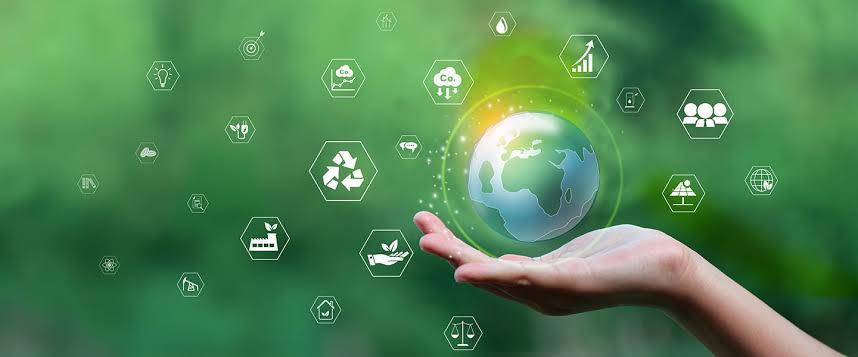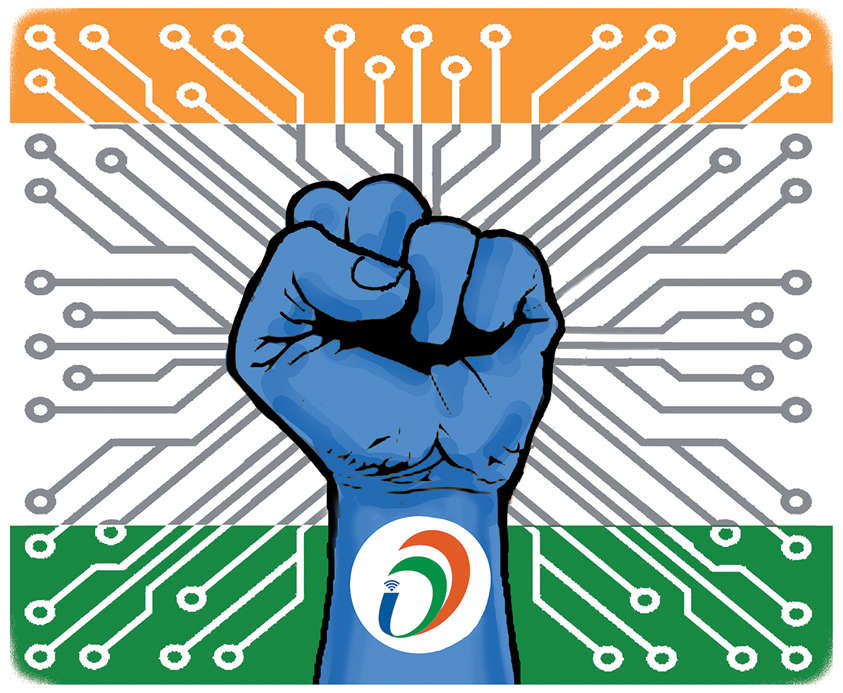
CleanTech and the Future of Sustainable Energy
CleanTech is transforming energy production and consumption to fight climate change and build a sustainable future. Innovations in solar, wind, energy storage, smart grids, green hydrogen, and electric vehicles enable cleaner, more efficient energy systems. Supported by policies and consumer choices, these technologies face challenges but offer vast potential. Their widespread adoption is vital to reduce carbon footprints, decarbonize industries, and secure affordable, reliable clean energy for
✨ Raghav Jain

Introduction
As the world faces climate change, pollution, and finite fossil fuel reserves, the demand for clean, sustainable energy solutions has never been higher. CleanTech, or clean technology, refers to innovations that reduce environmental impact while providing energy in eco-friendly ways. From solar panels to wind turbines and advanced energy storage, CleanTech is reshaping how we power our lives.
This article explores what CleanTech is, its key technologies, how it contributes to a sustainable future, and practical steps individuals and industries can take to embrace this energy revolution. Understanding CleanTech is essential as we all play a role in protecting our planet and securing a greener future for generations to come. CleanTech, short for clean technology, represents a vast and rapidly evolving sector dedicated to mitigating negative environmental impacts through innovation, particularly in the realm of sustainable energy. It encompasses any process, product, or service designed to reduce pollution, improve energy efficiency, and promote the sustainable use of natural resources. This isn't just about renewable energy; it’s a broader concept that includes everything from smart grids and advanced energy storage to carbon capture, green hydrogen production, electric vehicles, sustainable agriculture, and even technologies for water purification and waste management. The fundamental idea is to achieve economic prosperity and human well-being while drastically reducing our ecological footprint, moving away from the "dirty" technologies of the past.
The future of sustainable energy is inextricably linked with CleanTech, as these innovations are the driving force behind the global energy transition. We are witnessing a monumental shift from fossil fuels, which have powered our world for centuries but are finite and environmentally destructive, to renewable sources that are abundant and cleaner. Solar energy, particularly through advanced photovoltaics, continues to become more efficient and cheaper, making it competitive with traditional power sources even in developing economies. Wind power, both onshore and increasingly offshore with new floating turbine technologies, is expanding rapidly, harnessing stronger and more consistent winds in deeper waters. Hydropower, while mature, is seeing innovations in small-scale and adaptable solutions. Geothermal energy, tapping into the Earth's internal heat, is also becoming more accessible through advanced drilling techniques.
Beyond these well-known renewables, CleanTech is pushing boundaries. Green hydrogen, produced by using renewable electricity to split water, is emerging as a critical clean fuel for hard-to-decarbonize sectors like heavy industry, shipping, and aviation, and for long-term energy storage. Advanced energy storage systems, especially new battery technologies like solid-state batteries with higher energy density and longer lifespans, are crucial for balancing the intermittent nature of solar and wind power, ensuring a stable and reliable energy supply. Smart grid infrastructure, integrated with artificial intelligence and big data, is revolutionizing how energy is produced, distributed, and consumed, optimizing energy use in real-time, predicting demand, and integrating decentralized energy resources seamlessly. Carbon capture and utilization technologies are also a significant CleanTech focus, aiming to prevent CO2 emissions from entering the atmosphere, even from existing industrial processes where direct emissions are hard to avoid.
The impact of CleanTech on the global energy landscape is already profound and will only intensify. It’s reshaping geopolitics by reducing dependence on fossil fuel imports and enhancing energy security for nations. Economically, it's creating millions of new jobs in manufacturing, installation, operation, and maintenance of clean energy systems, fostering innovation, and attracting massive investments globally. Environmentally, the widespread adoption of CleanTech is directly mitigating climate change by drastically cutting greenhouse gas emissions, improving air quality, and preserving natural resources. It’s also making energy more accessible and affordable in many regions as the cost of renewables continues to fall, enabling energy access for underserved populations. Furthermore, CleanTech supports the electrification of end-use sectors like transportation, with electric vehicles becoming mainstream and driving demand for renewable charging infrastructure. The goal is a net-zero future, where our energy systems are entirely sustainable and our industries operate with minimal environmental impact. This transformative shift, powered by ongoing technological breakthroughs and increasing global commitment, is defining the very trajectory of our planet's future.
What is CleanTech?
CleanTech is a broad term for technologies designed to:
- Produce energy with minimal carbon emissions
- Improve energy efficiency
- Reduce waste and pollution
- Utilize renewable resources like sun, wind, and water
Unlike traditional energy sources such as coal, oil, and natural gas, CleanTech emphasizes sustainability and environmental responsibility. It includes solar power, wind energy, electric vehicles, battery storage, smart grids, bioenergy, and more.
Key CleanTech Technologies Shaping Sustainable Energy
1. Solar Energy
Solar panels convert sunlight directly into electricity through photovoltaic cells. Advances in solar technology have made it cheaper, more efficient, and accessible for homes, businesses, and large-scale solar farms.
2. Wind Energy
Wind turbines harness wind power to generate electricity. Offshore and onshore wind farms provide large-scale clean power. New turbine designs improve efficiency even in low-wind areas.
3. Energy Storage (Batteries)
Energy storage systems, especially lithium-ion batteries, store excess renewable energy for use during cloudy or calm periods. Innovations like solid-state batteries and grid-scale storage are key for stable clean energy supply.
4. Electric Vehicles (EVs)
EVs reduce dependence on fossil fuels and lower greenhouse gas emissions. CleanTech innovations in EV battery life, charging infrastructure, and recycling improve their environmental footprint.
5. Smart Grids and IoT
Smart grids use digital communication to optimize electricity distribution, reduce waste, and integrate diverse energy sources seamlessly. IoT sensors enable real-time monitoring and efficient energy use.
6. Bioenergy and Waste-to-Energy
Using organic materials (biomass) and waste to generate heat, electricity, or fuels reduces landfill use and provides renewable energy alternatives.
How CleanTech Powers a Sustainable Future
- Reducing Carbon Emissions
- By replacing coal and gas plants with renewable sources, CleanTech drastically cuts greenhouse gas emissions that drive global warming.
- Energy Independence
- CleanTech harnesses local renewable resources, reducing reliance on imported fuels and enhancing energy security.
- Economic Growth & Jobs
- The clean energy sector creates millions of jobs worldwide, from manufacturing solar panels to maintaining wind farms.
- Improving Air Quality and Health
- Cleaner energy means less pollution, which leads to fewer respiratory illnesses and environmental damage.
- Resilience Against Climate Change
- Distributed renewable systems and smart grids help communities better withstand extreme weather and energy disruptions.
Challenges Facing CleanTech Adoption
- High Initial Costs: Though prices are falling, upfront investments can be a barrier.
- Intermittency: Solar and wind depend on weather and daylight, requiring storage solutions.
- Infrastructure: Updating old grids and building charging stations or hydrogen fueling networks takes time and money.
- Raw Materials: Mining for batteries involves environmental and ethical concerns.
- Policy and Regulation: Government support and consistent policies are crucial but vary worldwide.
Daily Practices to Support CleanTech and Sustainable Energy
At Home:
- Install solar panels if possible or opt for green energy plans.
- Use energy-efficient appliances and LED lighting.
- Reduce unnecessary electricity use—switch off lights and devices.
- Use programmable thermostats to optimize heating and cooling.
- Charge EVs during off-peak hours if you have one.
At Work:
- Encourage remote work and video meetings to reduce commuting emissions.
- Advocate for clean energy purchasing or renewable energy certificates.
- Support recycling programs and waste reduction.
- Propose energy audits to improve efficiency.
In Community:
- Support policies promoting clean energy infrastructure.
- Participate in tree planting and local sustainability initiatives.
- Use public transport, carpooling, or EVs when possible.
- Educate others about CleanTech benefits and usage.
CleanTech Innovations to Watch
- Green Hydrogen: Hydrogen produced using renewable energy, offering zero-emission fuel for heavy industry and transportation.
- Perovskite Solar Cells: A cheaper and more efficient solar technology under rapid development.
- Grid-Scale AI: Artificial intelligence optimizing energy distribution and consumption dynamically.
- Carbon Capture and Storage (CCS): Technologies that remove CO2 emissions directly from power plants or air.
- Microgrids: Localized grids that operate independently for resilience and energy autonomy.
Myths About CleanTech and Sustainable Energy: Busted!
“CleanTech is too expensive and not practical.”
→ Costs have dropped dramatically; solar and wind are often cheaper than fossil fuels today.
“Renewable energy can’t meet our large-scale energy needs.”
→ With storage and smart grids, renewable energy can reliably power cities and industries.
“Electric vehicles just shift pollution elsewhere.”
→ EVs are cleaner over their lifetime, especially as electricity grids get greener.
“Solar panels don’t work in cloudy or cold places.”
→ Modern solar works well even in low sunlight and cold climates.
“Switching to clean energy will kill jobs.”
→ CleanTech creates new jobs and industries, often faster than fossil fuel jobs decline.
Sample CleanTech Lifestyle Plan
AspectPracticeBenefitHome EnergyInstall solar panels or green energy planReduce carbon footprintTransportationUse electric or hybrid vehicleLower emissions, save fuelDaily HabitsUnplug devices when not in useSave electricityCommunityJoin local clean energy groupsSupport advocacy and educationLearningFollow CleanTech news and trendsStay informed and engaged
Conclusion
CleanTech is no longer a futuristic dream—it’s a present reality driving the global shift toward sustainable energy. It holds the key to tackling climate change, improving public health, and creating economic opportunities. By understanding and embracing CleanTech technologies, from solar and wind to electric vehicles and smart grids, we can all contribute to a cleaner, greener, and more resilient planet.
Individual choices—from installing solar panels to supporting green policies—combined with innovation and investment will shape the future of energy. The power to create a sustainable energy future is in our hands.
Start small, stay informed, and take action today—because CleanTech is not just technology; it’s the future we urgently need.
Q&A Section
Q1:- What is CleanTech and why is it important for sustainable energy?
Ans :- CleanTech refers to technologies that reduce environmental impact by improving energy efficiency, lowering emissions, and promoting renewable energy sources essential for a sustainable future.
Q2:- How are solar and wind energy shaping the future of sustainable power?
Ans :- Solar and wind are abundant, renewable, and increasingly cost-effective, driving a major shift away from fossil fuels toward clean electricity generation globally.
Q3:- What role do energy storage solutions like batteries play in CleanTech?
Ans :- Advanced batteries store renewable energy for use when generation is low, ensuring grid stability and enabling widespread adoption of intermittent clean energy sources.
Q4:- How does smart grid technology enhance energy efficiency and sustainability?
Ans :- Smart grids use digital communication to monitor and manage electricity flow, optimize consumption, reduce waste, and integrate diverse renewable sources.
Q5:- What is green hydrogen and how does it contribute to CleanTech?
Ans :- Produced via renewable-powered electrolysis, green hydrogen is a clean fuel that can replace fossil fuels in industries, transportation, and energy storage.
Q6:- How do electric vehicles (EVs) impact the sustainable energy transition?
Ans :- EVs reduce dependence on oil, cut emissions, and when paired with clean electricity, offer a zero-emission transportation solution critical for sustainability.
Q7:- What innovations in CleanTech are helping to decarbonize heavy industries?
Ans :- Technologies like carbon capture, utilization and storage (CCUS), electrification, and alternative fuels help industries reduce greenhouse gas emissions significantly.
Q8:- How do government policies and incentives support CleanTech adoption?
Ans :- Subsidies, tax breaks, and regulations encourage investment and innovation, accelerating the shift to sustainable energy technologies.
Q9:- What challenges does CleanTech face in global implementation?
Ans :- High initial costs, infrastructure gaps, technological maturity, and policy inconsistency can slow CleanTech adoption worldwide.
Q10:- How can individuals contribute to the growth of CleanTech and sustainable energy?
Ans :- By adopting energy-efficient appliances, supporting renewable energy projects, choosing EVs, and advocating for sustainable policies, individuals help drive the CleanTech revolution.
Similar Articles
Find more relatable content in similar Articles

The Dark Web Economy: What’s R..
Beneath the surface of the int.. Read More

The Death of the Charging Port..
“As technology evolves, the tr.. Read More

E-Waste Crisis: The Race to Bu..
The rapid growth of electronic.. Read More

Digital India: How Technology ..
Digital India leverages techn.. Read More
Explore Other Categories
Explore many different categories of articles ranging from Gadgets to Security
Smart Devices, Gear & Innovations
Discover in-depth reviews, hands-on experiences, and expert insights on the newest gadgets—from smartphones to smartwatches, headphones, wearables, and everything in between. Stay ahead with the latest in tech gear
Apps That Power Your World
Explore essential mobile and desktop applications across all platforms. From productivity boosters to creative tools, we cover updates, recommendations, and how-tos to make your digital life easier and more efficient.
Tomorrow's Technology, Today's Insights
Dive into the world of emerging technologies, AI breakthroughs, space tech, robotics, and innovations shaping the future. Stay informed on what's next in the evolution of science and technology.
Protecting You in a Digital Age
Learn how to secure your data, protect your privacy, and understand the latest in online threats. We break down complex cybersecurity topics into practical advice for everyday users and professionals alike.
© 2025 Copyrights by rTechnology. All Rights Reserved.